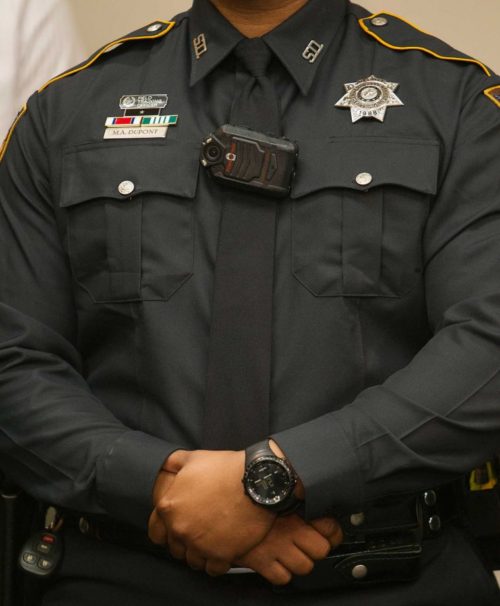We’ve all seen footage shot from a dash cam in a police car. Often we see something horrific or informative, but sometimes it’s actually funny. Now we have body cams. If we thought smartphones and portable digital cameras were bringing a whole new experience to our screens, just wait as the number of body cams increases exponentially in the world of law enforcement.
Body cameras have already had positive results. The Wall Street Journal reported last year that use of force by police officers declined 60 percent in Rialto, Calif., after body cameras were introduced.
Though some law enforcement officials say body cams present privacy issues, a 2014 Associated Press article noted that dash cams also met with a lot of skepticism when they were first introduced: “For decades police have used cameras mounted to the dashboards of their patrol cars — initially referred to with suspicion by officers as ‘indict-o-cams’ until they discovered the footage exonerated them in most cases.â€
While there’s plenty of evidence for body cam use on both sides of the forensic fence, how will law enforcement address the almost immediate public relations problems they may present?
Certainly, lawyers stand to make a lot of money seeking to get footage released or, in some cases, not released. How will the Freedom of Information Act help journalists uncover potentially explosive footage, as we’ve witnessed in a few cases to date?
So, are we now living in an Orwellian state? [“Orwellian” is an adjective describing a situation, idea or societal condition that is destructive to a free and open society, attributable to author George Orwell.] I hope not.
Cameras are simply recording devices; the context and conditions leading up to the visual may be extraordinarily different from what we’re viewing on the screen. But, as we know, perception equals reality. And it’s clear the adage that a picture equals a thousand words won’t go away.
However, the opposite may hold true, too. Solid visual evidence may help clear the air when unfounded allegations arise.
How will public relations practitioners deal with overwhelming visual evidence that suggests something is rotten in Denmark, Santa Clara or Richmond? We’re on the cusp of developing strategies for dealing with body cam footage and its fallout.
Just when we thought it was safe to go outside and deal with the onslaught of social media and YouTube videos from a public relations perspective, we get RoboCop ®. One thing we’ve learned: The tools may change, but human behavior rarely does.

